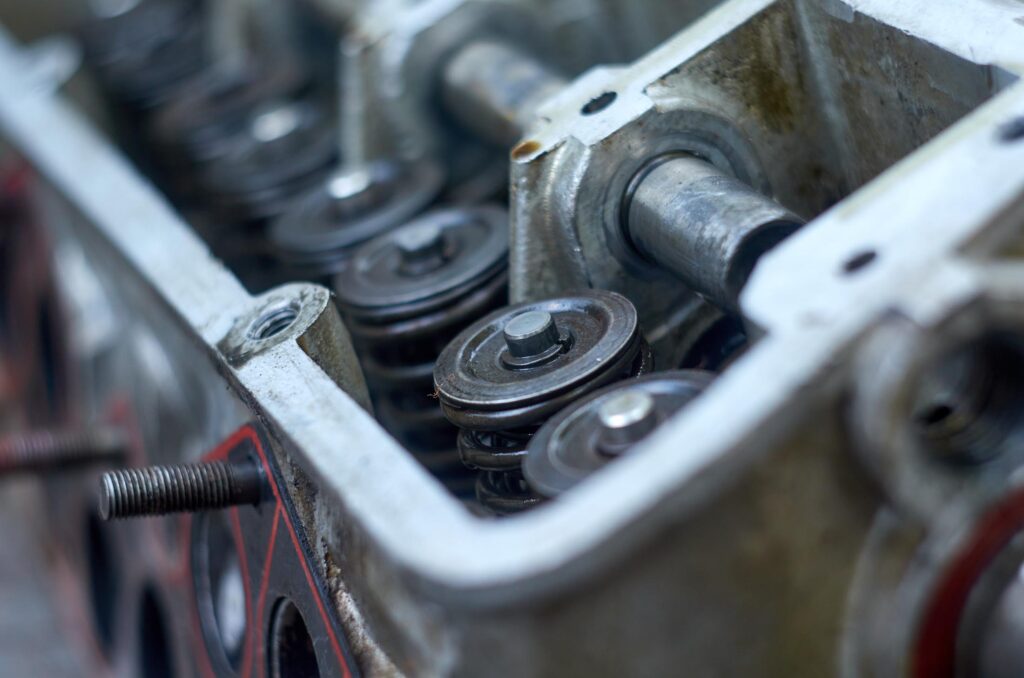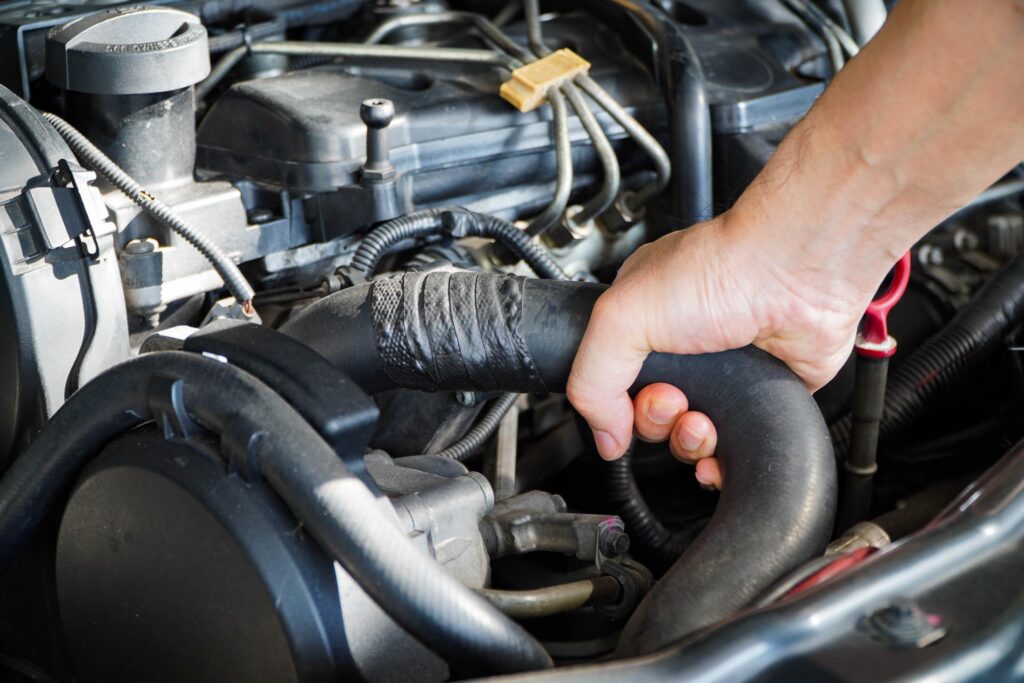The radiator hose connects the engine cooling system to the heater core, carrying coolant between the engine and radiator and back to the water pump.
Because it’s considered a connector for the cooling system, your vehicle might experience a couple of performance issues if it collapses.
What Happens When You Drive With a Collapsed Radiator Hose?
Driving with a collapsed radiator hose can lead to engine overheating. Once this happens, you’ll notice that the needle on the temperature gauge is above the middle line.
Keep in mind that driving an overheated vehicle can lead to severe repercussions in the long run. Here are some of the most common ones.
Warped Cylinder Heads
Cylinder heads support the valve and valve train. They also serve as a passageway for intake and exhaust gases, coolant, and engine oil.

In an overhead camshaft setup, cylinder heads also support the camshaft, rocker arms, intake and exhaust valves, and valve guides.
Cylinder heads are usually made from aluminum, a material that tends to melt under extremely hot temperatures.
An overheated engine can warp the cylinder head, resulting in performance issues like poor acceleration, misfires, and excessive oil burning.
Broken Head Gasket
The head gasket creates a leak-free seal in the combustion chamber. It also seals the coolant and oil passages between the head and block.
Bimetal stress as a result of overheating can cause the head gasket to fail.
A blown cylinder head gasket will let engine coolant flow into the combustion chamber where it turns to steam. As a result, white steam can come out of the tailpipe.
Busted Hoses
If you continue to drive with a collapsed radiator hose, other automotive hoses are more likely to get damaged as well.
The remaining coolant in the hoses can boil and expand, leading to extreme pressure buildup.
Once this happens, hot coolant can spew all over the engine, damaging other sensitive components.
What Causes a Radiator Hose to Collapse?
There are several reasons why a radiator hose can collapse. Here are some of the most common ones.
Clogged Hose or Radiator
Debris, gelling coolant, or corrosion can build up inside the hose or radiator after some time. The blockage can create suction, squeezing down the hose while the water pump tries to circulate the coolant.
Loose Clamp
A loose hose clamp can cause air to enter the cooling system and cause the hose to collapse in itself once the slight positive pressure is gone. This usually happens when the engine is shut off.

Coolant Leaks
Coolant is a mixture of antifreeze and water that protects certain components from freezing and corrosion.
Coolant also picks up heat from the engine and carries it to the radiator where the heat is released into the atmosphere.
Coolant can leak from anywhere in the cooling system, including the radiator, thermostat housing, water pump, and heater core, among others.
Once the coolant level drops to the point where air can enter the cooling system, the antifreeze can make the air contract and create suction, which squishes the radiator hose down.
Damaged Radiator Cap
Radiators have spring-loaded pressure caps that close their cooling system vents.
Cooling pressure builds up to the pressure setting of the cap, causing its valve to release the excess pressure and prevent system damage.
A damaged radiator cap won’t be able to regulate the cooling system’s pressure properly which can eventually cause the radiator hose to collapse. In fact, it’s the most common cause of a collapsed hose.
If the cap’s pressure release spring fails, the cooling system can go into vacuum.
Wear and Tear
Radiator hoses can last anywhere between 10 and 15 years with proper maintenance. But like any other car part, the radiator hose may wear out earlier than designed.
The hose might even collapse when you least expect it, especially if you’re someone who’s not too keen on keeping up with maintenance tasks.
How to Fix a Collapsed Radiator Hose
Determining whether or not a collapsed radiator hose is repairable largely depends on where the damage is.
Not all collapsed radiator hoses need immediate replacement. In some cases, replacing the radiator cap does the trick, or a simple cleaning job can get the hose working as it should.
But if the hose already feels spongy, sticky, or has developed some cracks, it might be best to shop for a replacement right away.

For some people, replacing a radiator hose might seem like a DIY-friendly task.
Replacing a radiator hose typically involves getting all the air out of the cooling system once you’re done. Heat settings should blow hot air, and the temperature should be normal.
But if you’re not familiar with the inner workings of automotive repair yet, it might be best to have a trained professional replace your vehicle’s radiator hose instead.
Replacing a radiator hose typically involves getting all the air out of the cooling system once you’re done. Heat settings should blow hot air, and the temperature should be normal.
–Anthony Harlin, ASE Certified Master Automobile Technician
Radiator Hose Construction
Radiator hoses are made to be pliable, but not soft. Like other automotive hoses, they’re made from rubber with reinforcing fabric weaving for added strength.
There are generally two radiator hoses一an upper and lower hose.
The lower radiator hose usually has an inner spring that prevents the hose from being sucked closed. This hose connects to the water pump’s suction side. Nowadays, however, most vehicles don’t have an inner spring in the lower radiator hose.
Cooling System Maintenance
A collapsed radiator hose is often the result of a failing radiator cap.
If you’re looking to keep your vehicle in tip-top shape, there are a few maintenance tasks you can do to make the most out of your vehicle’s cooling system parts.
Flush the Cooling System
It’s generally recommended to flush the cooling system every two years or 30,000 miles.
Flushing the coolant helps remove debris or other contaminants that could have built up in the system.
Tighten the Radiator Cap
A loose radiator cap prevents the cooling system from pressurizing, which will eventually cause the engine to overheat. Make sure that the cap is always tight and secure.
However, keep in mind that you shouldn’t unscrew the radiator cap while the engine’s still hot because hot coolant can spew out of the radiator. Only remove the radiator cap once the engine cools down.
Check Your Coolant Levels
Make sure your vehicle has enough coolant stored in its reservoir. It’s also a good idea to purchase coolant that’s fit for your vehicle’s specifications.
Clean the Radiator
Over time, dirt and debris can clog the radiator and affect its performance. Cleaning the radiator every six months can prevent this from happening.
Any information provided on this Website is for informational purposes only and is not intended to replace consultation with a professional mechanic. The accuracy and timeliness of the information may change from the time of publication.
































